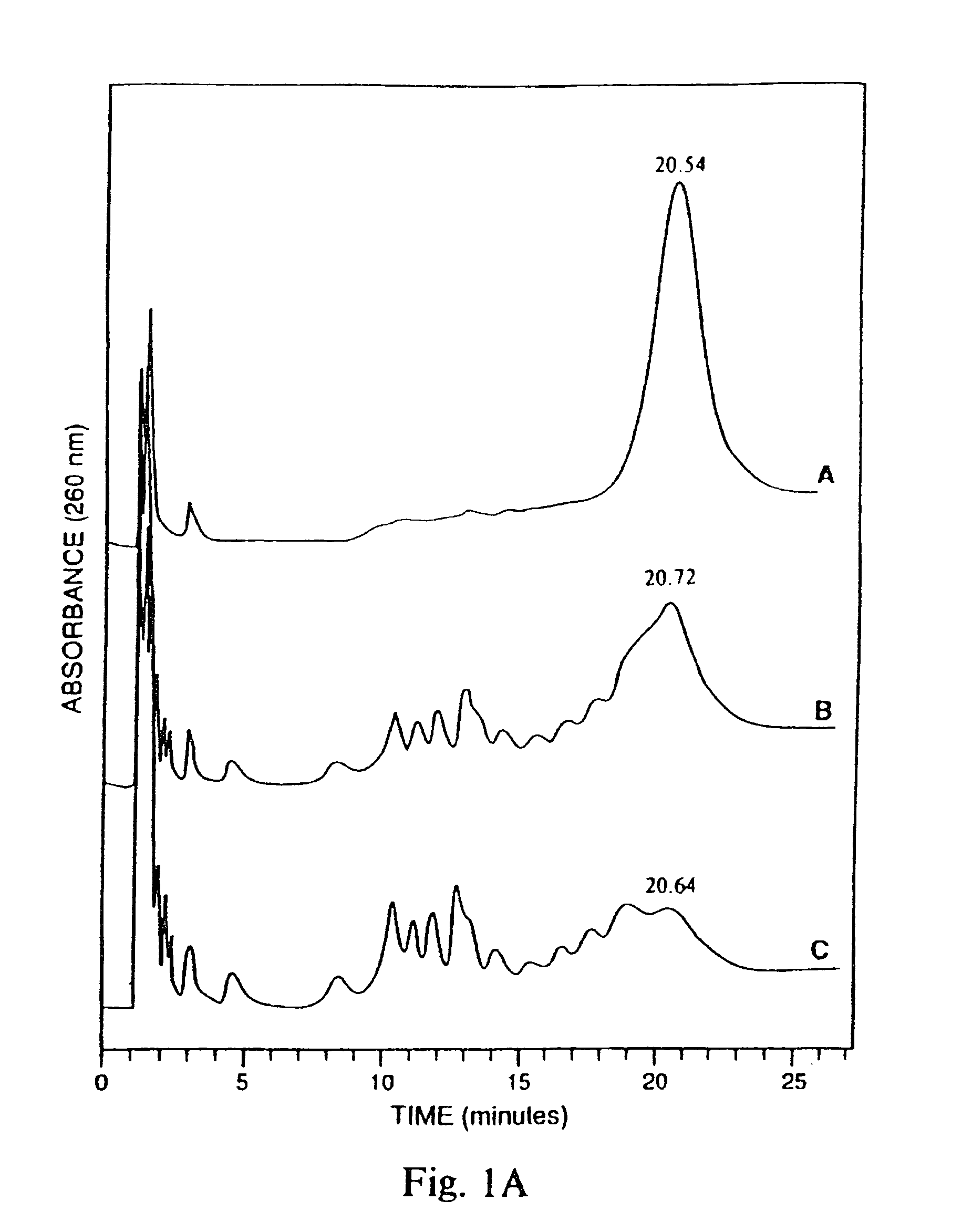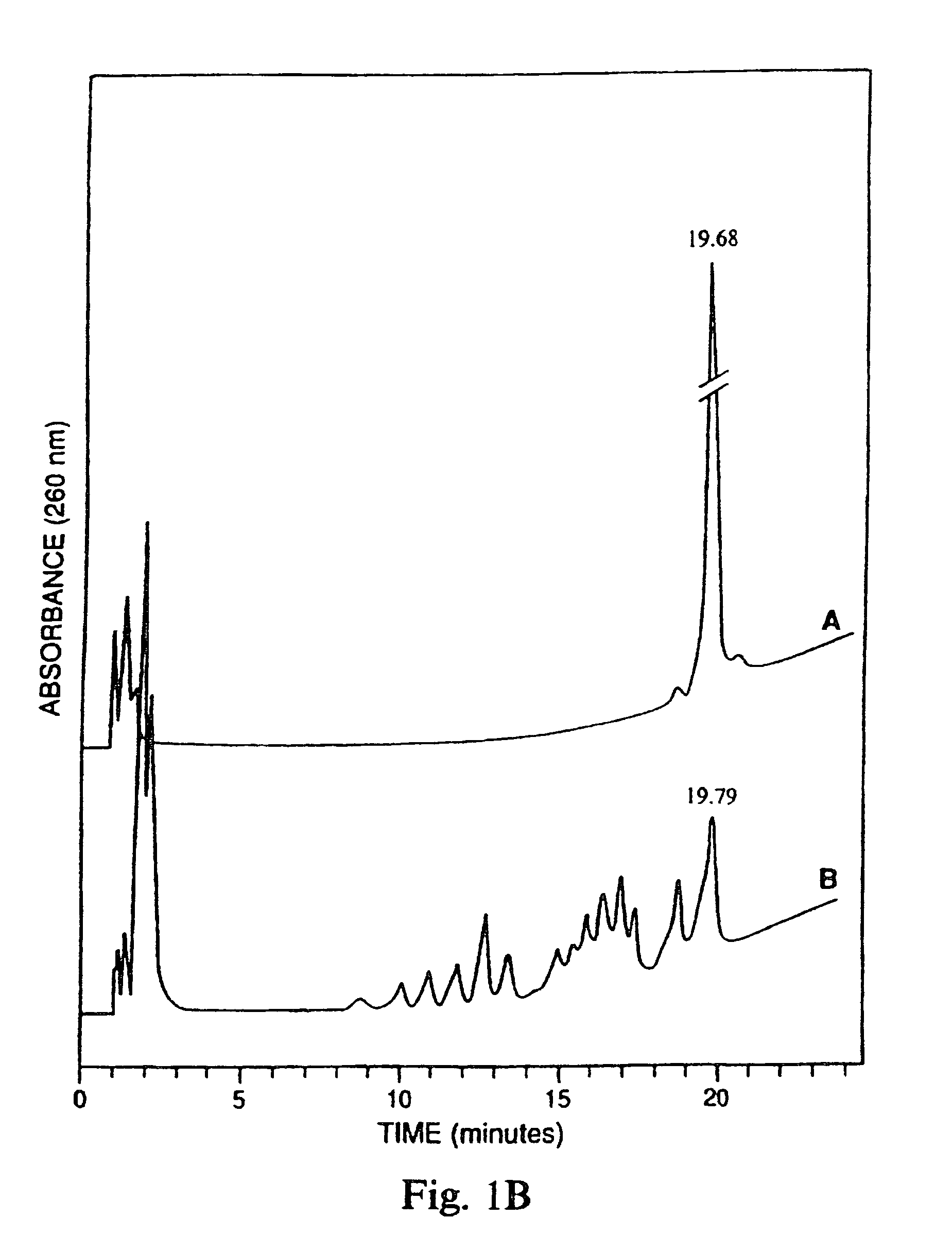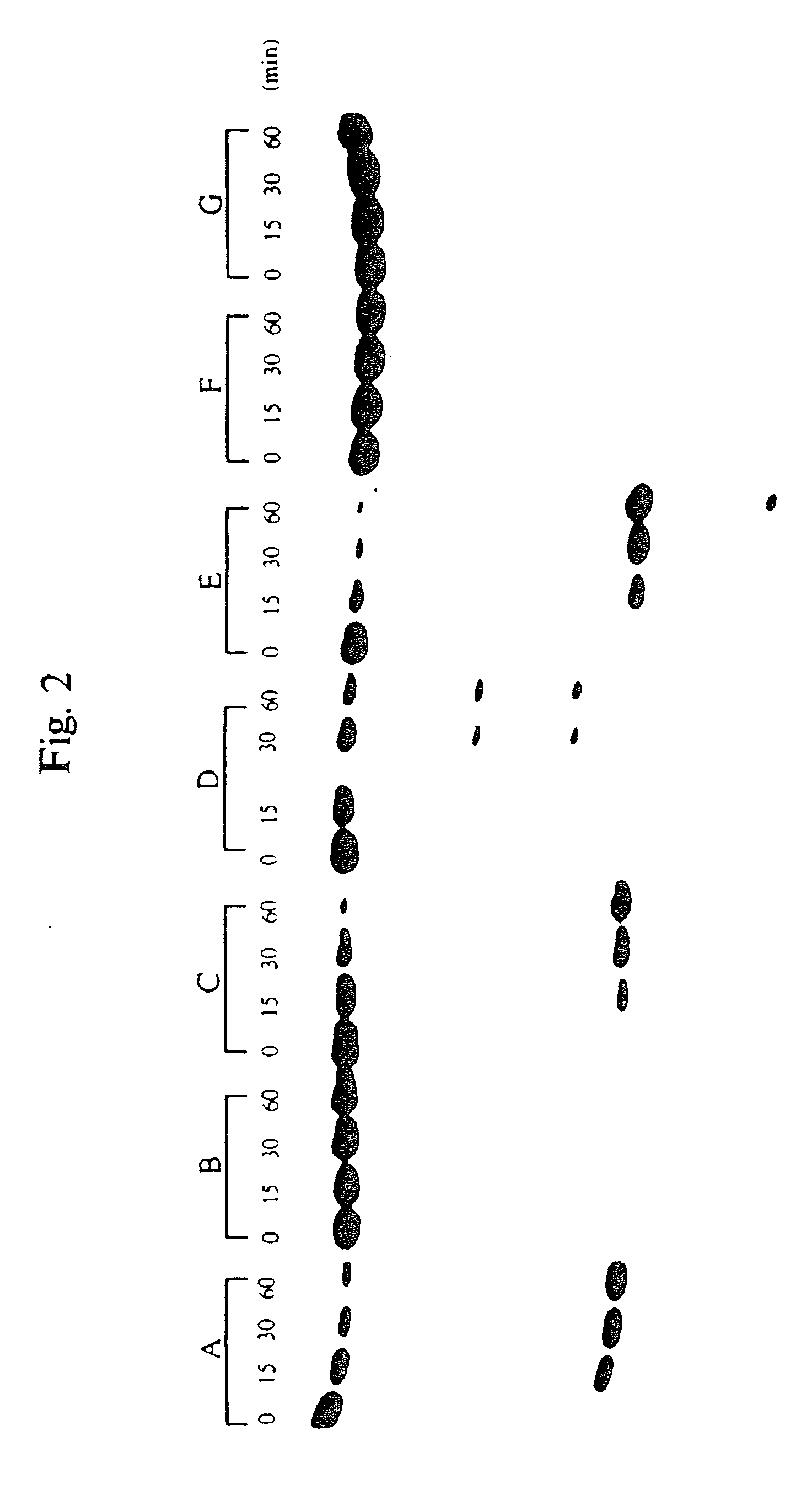Hybrid oligonucleotide phosphorothioates
a technology of hybrid oligonucleotide and phosphorothioate, which is applied in the field of synthetic oligonucleotides, can solve the problems of limiting the bioavailability of oligonucleotides in vivo, reducing the stability of duplex, and limiting the effectiveness of such oligonucleotides as therapeutic agents, so as to improve the potential efficacy of anti-sense oligonucleotid
- Summary
- Abstract
- Description
- Claims
- Application Information
AI Technical Summary
Problems solved by technology
Method used
Image
Examples
example 1
Synthesis of Hybrid Oligonucleotide Phosphorothioates
[0043]Hybrid oligonucleotide phosphorothioates were synthesized on CPG on a 5–6 μmole scale on an automated synthesizer (model 8700, Millipore, Milford, Mass.) using the H-phosphonate approach described in U.S. Pat. No. 5,149,798. Deoxynucleoside H-phosphonates were obtained from Millipore. 2′—OMe ribonucleotide H-phosphonates were synthesized by standard procedures. Segments of oligonucleotides containing 2′—OMe nucleoside were assembled by using 2′—OMe ribonucleoside H-phosphonates for the desired cycles. Similarly, segments of oligonucleotides containing deoxyribonucleosides were assembled by using deoxynucleoside H-phosphonates for the desired cycles. After assembly, CPG bound oligonucleotide H-phosphonate was oxidized with sulfur to generate the phosphorothioate linkage. Oligonucleotides were then deprotected in concentrated NH,OH at 40° C. for 48 hours.
[0044]Crude oligonucleotide (about 500 A280 units) was analyzed on revers...
example 2
Relative Nuclease Resistance of Hybrid Oligonucleotide Phosphorothioates
[0047]To test the relative nuclease resistance of various hybrid oligonucleotide phosphorothioates, the oligonucleotides were treated with snake venom phosphodiesterase (SVPD). About 0.2 A280 units of oligos A, C and F were dissolved in 500 μl buffer (40 mM NH4CO3, pH 0.4+20 mM MgCl2) and mixed with 0.1 units SVPD. The mixture was incubated at 37° C. for 420 minutes. After 0, 200 and 420 minutes, 165 μl aliquots were removed and analyzed using ion exchange HPLC. The results are shown in FIG. 1. Oligonucleotide F (SEQ ID NO:6) was very resistant to phosphodiesterase, whereas oligonucleotide A (SEQ ID NO:1) was digested almost to completion and oligonucleotide C (SEQ ID NO:3) was digested to 50% (panel A). An oligonucleotide phosphodiester was digested to about 80% in one minute using one tenth of the concentration of SVPD. (panel B)
[0048]These results indicate that the presence of 2′—OMe ribonucleotides in an oli...
example 3
Relative Duplex Stability of Hybrid Oligonucleotide Phospohorothioates
[0049]Oligonucleotides A–F (SEQ ID NOS:1–6) were tested for the relative stability of duplexes formed between them and complementary oligodeoxyribonucleotides, and with complementary oligoribonucleotides. In separate reactions, each oligonucleotide A-F (SEQ ID NOS:1–6) was mixed with an equivalent quantity (0.2 A280 units) of its complementary oligonucleotide in 150 mM NaCl, 10 mM Na2PO4, 1 mM EDTA, pH 7. The mixture was heated to 85° C. for 5 minutes, then cooled to 30° C. The temperature was then increased from 30° C. to 80° C. at a rate of 1° C. p minute and A280 was recorded as a function of temperature. The results are shown in Table III, below, where oligonucleotides A–F correspond to SEQ ID NOS:1–6, respectively.
[0050]
TABLE IIIMELTING TEMPERATURE OF DUPLEXESDNA-RNA DuplexDNA-DNA DuplexDNA-RNA Duplexw / MagnesiumDifferences inDifferences inDifference inTm comparedTm comparedTm comparedto oligo-to oligo-Tm DNA-...
PUM
| Property | Measurement | Unit |
|---|---|---|
| pH | aaaaa | aaaaa |
| temperature | aaaaa | aaaaa |
| temperature | aaaaa | aaaaa |
Abstract
Description
Claims
Application Information
 Login to View More
Login to View More - R&D
- Intellectual Property
- Life Sciences
- Materials
- Tech Scout
- Unparalleled Data Quality
- Higher Quality Content
- 60% Fewer Hallucinations
Browse by: Latest US Patents, China's latest patents, Technical Efficacy Thesaurus, Application Domain, Technology Topic, Popular Technical Reports.
© 2025 PatSnap. All rights reserved.Legal|Privacy policy|Modern Slavery Act Transparency Statement|Sitemap|About US| Contact US: help@patsnap.com



